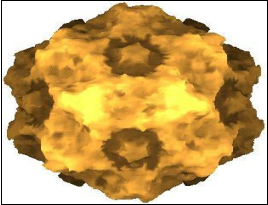| Catalog number | RC-CF16 |
| Summary | Detection of specific antigens of FPV within 10 minutes |
| Principle | One-step immunochromatographic assay |
| Detection Targets | FPV antigens |
| Sample | Feline Feces |
| Reading time | 5 ~ 10 minutes |
| Sensitivity | FPV : 100.0 % vs. PCR, |
| Specificity | FPV : 100.0 % vs. PCR |
| Contents | Test kit, Tubes, Disposable droppers, and Cottonswabs |
| Storage | Room Temperature (at 2 ~ 30℃) |
| Expiration | 24 months after manufacturing |
| Caution | Use within 10 minutes after openingUse appropriate amount of sample (0.1 ml of a dropper) Use after 15~30 minutes at RT if they are stored under cold circumstances Consider the test results as invalid after 10 minutes |
In practice, FPV antigen detection in feces is usually carried out using commercially available latex agglutination or immunochromatographic tests. These tests have an acceptable sensitivity and specificity when compared to reference methods.
Diagnosis by electron microscopy has lost its importance due to more rapid and automated alternatives. Specialized laboratories offer PCR-based test on whole blood or feces. Whole blood is recommended in cats without diarrhoea or when no fecal samples are available.
Antibodies to FPV can also be detected by ELISA or indirect Immunofluorescence. However, the use of an antibody test is of limited value, because serological tests do not differentiate between infection- and vaccination-induced antibodies.
There is no cure for FPV but if the disease is detected in time, the symptoms can be treated and many cats recover with intensive care including good nursing, fluid therapy and assisted feeding. Treatment involves alleviating vomiting and diarrhea, to prevent subsequent dehydration, along with steps to prevent secondary bacterial infections, until the cat's natural immune system takes over.Feline parvovirus is a virus that can cause severe disease in cats – particularly kittens. It can be fatal. As well as feline parvovirus (FPV), the disease is also known as feline infectious enteritis (FIE) and feline panleucopenia. This disease occurs worldwide, and nearly all cats are exposed by their first year because the virus is stable and ubiquitous.
Most cats contract FPV from a contaminated environment via infected feces rather than from infected cats. The virus may also sometimes spread through contact with bedding, food dishes, or even by handlers of infected cats.
Also, Without treatment, this disease is often fatal.
The first signs a owner might notice are generalized depression, loss of appetite, high fever, lethargy, vomiting, dehydration, and hanging over the water dish. The course of the disease may be short and explosive. Advanced cases, when discovered, may cause death within hours. Normally, the sickness may go on for three or four days after the first elevation of body temperature.
Fever will fluctuate during the illness and abruptly fall to subnormal levels shortly before death. Other signs in later stages may be diarrhea, anemia, and persistent vomiting.
FPV is so prevalent and the signs so varied that any sick cat should be taken to a veterinarian for a definite diagnosis.
Vaccination is the main method of prevention. Primary vaccination courses usually start at nine weeks of age with a second injection at twelve weeks of age. Adult cats should receive annual boosters. The FPV vaccine is not recommended for kittens under eight weeks of age, since their natural immunity may interfere with the efficacy of the FPV vaccine.
Since the FPV virus is so hardy, and can persist in the environment for months or years, a thorough disinfection of the entire premises needs to be made after an outbreak of feline panleukopenia in a home shared by cats.The preferred initial tests are soluble-antigen tests, such as ELISA and other immunochromatographic tests, that detect free antigen in fluid. Testing for the disease can easily be performed. Soluble-antigen tests are most reliable when serum or plasma, rather than whole blood, is tested. In experimental settings most cats will have positive results with soluble-antigen test within
28 days after exposure; however the time between exposure and development of antigenemia is extremely variable and may be considerably longer in some instances. Tests using saliva or tears yield an unacceptably high percentage of inaccurate results and their use is not recommended. For a feline testing negative for the disease a preventive vaccine can be administered. The vaccine, which is repeated once every year, has an incredibly high success rate and is currently (in the absence of an effective cure) the most potent weapon in the fight against feline leukemia.
The only sure way to protect cats is to prevent their exposure to the virus. Cat bites are the major way infection is transmitted, so keeping cats indoors- and away from potentially infected cats that might bite them-markedly reduces their likelihood of contracting FIV infection. For the safety of the resident cats, only infection-free cats should be adopted into a household with uninfected cats.
Vaccines to help protect against FIV infection are now available. However, not all vaccinated cats will be protected by the vaccine, so preventing exposure will remain important, even for vaccinated pets. In addition, vaccination may have an impact on future FIV test results. It is important that you discuss the advantages and disadvantages of vaccination with your veterinarian to help you decide whether FIV vaccines should be administered to your cat.
Parvovirus. Electron Micrograph from Stewart McNulty, Queens University, Belfast.
